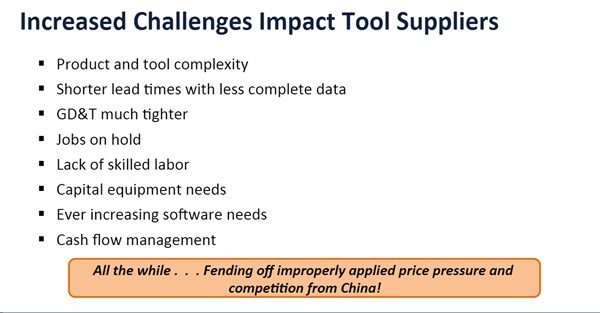What's Behind the Predicted Automotive Industry Slowdown
According to Harbour Results President and CEO Laurie Harbour, “The automotive industry has reached an inflection point and the entire manufacturing value chain will need to change the way it traditionally does business to remain profitable and prepare for a future downturn."

- Although the North American automotive industry demand is predicted to be more than 20 million vehicles in 2015, the industry will experience a plateau going forward to 2022.
- The Detroit 3 automakers have less than 45 percent of North American market share down from 87 percent in 1962.
- Regulatory issues, customer demand, advanced technology and economic factors are putting automaker profits at risk. Factors that are eating away at profitability includeincreased complexity, high mix, low volume variants, increased capital investment, increased tooling costs, product development cost and timing, high launch costs and warranty costs.
- With an unprecedented number of North American vehicle launches scheduled for 2017, 2018, 2019; 40, 49 and 39 respectively, resources will be constrained.
- A shift to low volume vehicles with a high mix of product will result in 80percentof the models being under 100,000 units in annual volumeby 2018.
- Growing complexity and the demand for new and innovative technology coupled with automaker price pressures is puttinga squeeze on Tier 1 supplier profitability.
- The tool and die industry continues to face increased challenges; including, increased tool complexity, shorter lead times, lack of skilled labor, tooling jobs on hold, capital equipment needs and cash flow management.
- As we look to the future there continues to be a capacity gapwithin the tool and die industry.
Related Content
-
Steps for Determining Better Mold Prices
Improving your mold pricing requires a deeper understanding of your business.
-
OEE Monitoring System Addresses Root Cause of Machine Downtime
Unique sensor and patent-pending algorithm of the Amper machine analytics system measures current draw to quickly and inexpensively inform manufacturers which machines are down and why.
-
Mold Design Review: The Complete Checklist
Gerardo (Jerry) Miranda III, former global tooling manager for Oakley sunglasses, reshares his complete mold design checklist, an essential part of the product time and cost-to-market process.











_300x250 3.png;maxWidth=300;quality=90)

